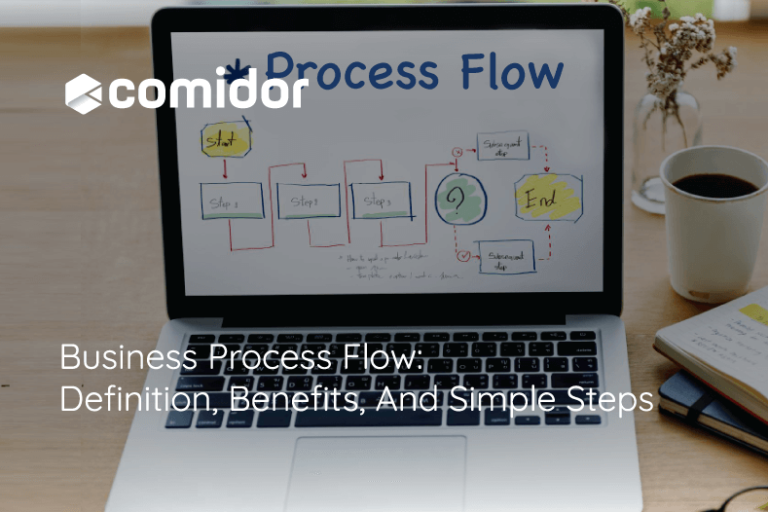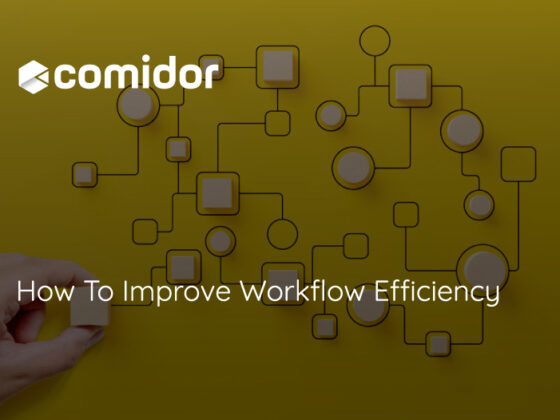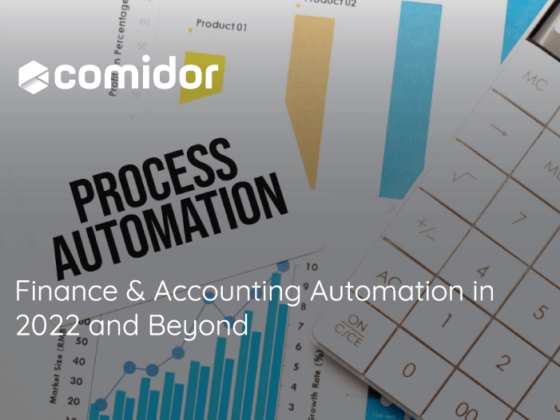Businesses require consistency and predictability. Without those essential factors, an organization is forced to operate with uncertainty and a lack of reliability, neither of which are conducive to business sustainability. However, attaining consistency and predictability within a business is not easily done, which is why any business concept, that helps achieve that, must be actively considered. Business process flows are an excellent example of such a concept. They are a practical way of ensuring that two essential things are achieved in any process: focus and consistency.
This article will provide an overview of the definition, the principal benefits of business process flows, and the simple steps to create successful business process flows.
Process Flows in Context
At its simplest, a business process flow is the sequential representation of a process and the various components thereof. These components can include operational factors such as actions required and the people and resources needed to achieve them, as well as applicable timelines. It helps define and layout all the aspects of a business process, so that said process is easily understood. One could say that a process flow provides a ‘snapshot’ overview of a given process. It allows employees to have a good understanding of how a business works.
Importantly, a process flow can be devised for any type of work or process in any type of organization. Therefore, a process flow can be as effectively used to describe how a purchasing order should be processed by the finance department, as it can be by a sales team to pitch a new product to potential customers. Process flows are used by industries as diverse as software development, auto assembly, and healthcare management. Below is a standard template for a process flow that can be used by a company’s to automate HR-related processes like the onboarding case:
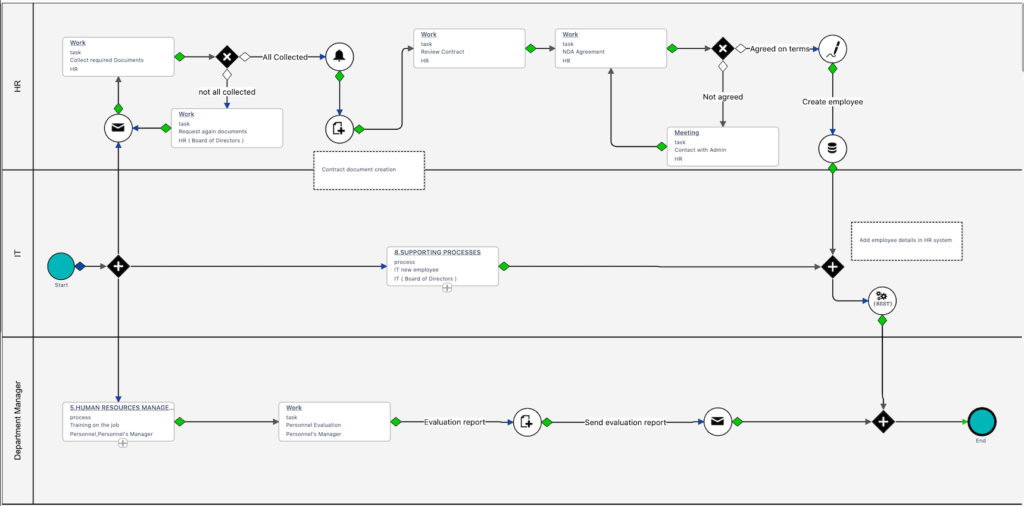
As can be seen in the process flow diagram above, a business process flow provides a breakdown of the various inputs and outputs within a process. Each of these workflow components is usually denoted by means of shapes, typically ovals, diamonds, and rectangles, with each being connected by lines that indicate the possible paths. The ‘flow’ within a business process flow and workflow design usually follows an A to Z logic, i.e. from commencement or start of a process to its logical conclusion or end-goal, whatever the latter might be.
Benefits of Business Process Flows
There are many benefits to having process flows, including process mapping, the principal ones of which include:
- Communication: everyone can understand a specific process, and be trained accordingly.
- Standardization: processes can be reliably replicated. That is why they should be an integral and invaluable part of standard operating procedures (SOPs).
- Comprehensiveness: process flows can be established across all verticals and at all levels within an organization.
- Maximization: all resources can be used to their full potential.
There are also systemic benefits to having business process flows in place:
- Cost minimization: understanding exactly how processes work means that cost efficiencies can be implemented where possible.
- Risk management: understanding your process means being able to identify potential risks and better able to mitigate them.
- Agility: process flows should ensure fewer (or no) bottlenecks, errors, and duplications, making for a more Agile business.
- Continuous improvement: knowing each step of a process means being able to improve processes as needed.
These benefits are applicable to process mapping itself, which is the actual diagrammatic compilation (i.e. mapping) of a process and its various components.
Simple Steps to Create Process Flows
The beauty of process flows is their simplicity, however complicated or technical the actual process might be. As such, simple steps can be taken to ensure that your process flow will be effective:
Step 1: Name it – the process flow should be specifically named according to the naming conventions used by your organization.
Step 2: Give it a purpose – what is the intent of the process flow? Why is this specific process flow in place and to what end?
Step 3: Scope it – give the process flow the needed extent of the scope by asking a simple question: what inputs and outputs should be included and excluded?
Step 4: Map inputs and outputs – go through each stage/phase/level of the process and identify the required inputs and outputs for each. Be specific in the inputs and think of possible variables for outputs.
Step 5: Provide direction – a process flow should comprise a series of directional arrows based on ‘Yes/No’ or ‘What If/What Then?’ questions posed that help connects inputs and outputs (i.e. components within the process flow).
Step 6: Assign duties and responsibilities – where needed in the process flow, applicable responsible people or line management should be indicated.
Step 7: Make it visual – a process flow should be mapped and its diagrammatic representation/workflow diagram to be readily available to any person who may need to understand the process and its objectives/intent.
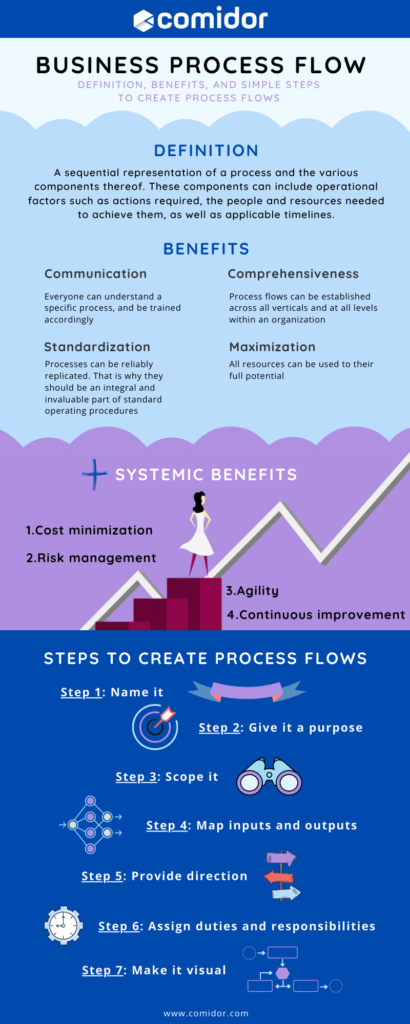
A final point: consider workflow automation powered with RPA and AI/ML capabilities of your business flows: Robotic Process Automation (RPA) is already being used by many businesses to enhance and automate repetitive process flows. RPA software can be used in order to choose which processes in a business should benefit from automation. Sales ordering process, enterprise resource planning (ERP), customer service, and payroll are just four examples of typical processes that can benefit immensely from Robotic Process Automation.
Conclusion
In today’s fast-paced and competitive world, organizations are constantly looking for ways to increase their efficiency and reduce costs. Business process flows are a critically important means by which a business can give itself the structure and sense of purpose needed to succeed. Process flows can help foster transparency, enhance collaboration, and create business intelligence.
Comidor workflow automation platform allows users to design any type of business process flow, automate and optimize workflows end-to-end, and incorporate intelligent automation functionalities, like RPA, AI, and Ml. There are many benefits associated with Comidor. It can help organizations save time by automating tasks, enhance customer service, and improve company culture through transparency.
In closing, value-adding performance by management and employees alike don’t just magically happen. It is the culmination of intelligent automation decisions made and actions put into practice. The real magic is in being able to ensure that business processes are created appropriately and work as planned again and again.
Author bio
Bryan Christiansen is the founder and CEO of Limble CMMS. Limble is a modern, easy-to-use mobile CMMS software that takes the stress and chaos out of maintenance by helping managers organize, automate, and streamline their maintenance operations.


